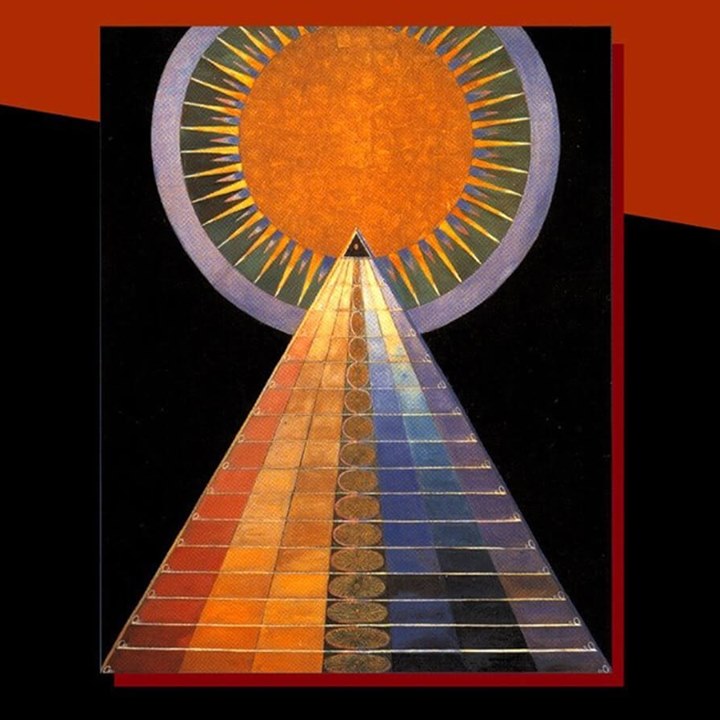
All of us possess three primary modes of perception that we use to disclose reality – the “Eye of Flesh”, the “Eye of Mind”, and the “Eye of Spirit”. Watch as Ken and Corey explore these ideas and the many ways we perceive and interpret spiritual realities.
Welcome back to The Ken Show!
“With the eye of Spirit, God can be seen. With the eye of Spirit, the universe unfolds its innermost contours. With the eye of Spirit, noumenon announces its pure Presence. With the eye of Spirit, the Kosmos delivers its deepest secrets. And with the eye of Spirit, the intractable nightmares of the sensory and mental dilemmas yield to the radiance of Emptiness itself.”
—Ken Wilber
Part 1: INTRODUCING THE EYE OF SPIRIT
In 1997 Ken Wilber published his groundbreaking and widely celebrated book, The Eye of Spirit: An Integral Vision for a World Gone Slightly Mad, which followed his seminal book Sex, Ecology, Spirituality by applying his Integral approach to important fields like psychology, spirituality, anthropology, cultural studies, art and literary theory, ecology, feminism, and planetary transformation.
At the core of The Eye of Spirit is a fairly simple premise — that all of us possess three primary modes of perception that we use to disclose reality:
– The “Eye of Flesh”, which refers to our sensory perception and experience;
– The “Eye of Mind”, which refers to our mental perception and experience;
– The “Eye of Spirit”, which refers to our spiritual perception and experience.
Watch as Ken introduces some of these central ideas from The Eye of Spirit.
Part 2: UNRAVELING THE RIDDLE OF STATES AND STAGES
At the time The Eye of Spirit was published, it was not yet clear what the relationship was between the vertical stages of “growing up” and the major state-stages of “waking up”. This insight would not arrive until the early 00’s and the emergence of the “Wilber-Combs Matrix”, which shows how all of these states are available to us at every step of our growth and development. This helps explain how people can have any number of state experiences at any time – whether emotional states, spiritual states, or other non-ordinary states – but will always interpret those experiences according to whatever developmental level they happen to be at.
Before this new integration, the integral model simply stacked the spiritual states-stages on top of developmental structure-stages — which seemed to make a a lot of sense at the time! But when the Wilber-Combs Matrix did finally emerge, it represented a major new evolution in Ken’s thinking. Watch as Ken explains how this confusion arose in the first place, and how he reconciles the major ideas of The Eye of Spirit with this new insight.
Part 3: THE FIVE MAJOR STATES
The Wilber-Combs Matrix emphasizes the five primary states that are available to human beings:
– Gross-waking states, such as what you might experience riding a bike or reading this page or doing bodywork;
– Subtle-dream states, such as you might experience in a vivid dream, or in a vivid daydream or visualization exercise, as well as in certain types of meditation with form;
– Causal-formless states, such as deep dreamless sleep and types of formless meditation and experiences of vast openness or emptiness;
– Witnessing states — or “the Witness” — which is a capacity to witness all of the other states; for example, the capacity for unbroken attention in the waking state and the capacity to lucid-dream;
– Ever-present Nondual awareness, which is not so much a state as the ever-present ground of all states (and can be “experienced” as such).
Watch as Ken gives a detailed overview of these major states of consciousness.
Part 4: DEFINING “TRANSPERSONAL” AND “TRANSRATIONAL”
Ken’s spectrum-like approach to growth and awakening provided us with some very clean and simple heuristics to help us understand concepts like prerational vs. transrational, prepersonal vs. transpersonal, etc. This became known as the “pre-trans fallacy” — which, among other things, helped us discern authentic and mature forms of spirituality from some of its more infantile, narcissistic forms.
But now that we have the Wilber-Combs matrix, which demonstrates how these state-stages can be perceived and experienced no matter where we are on the developmental spectrum, this would appear to change the definitions of terms like “transrational” and “transpersonal”, since these spiritual modes of knowing are no longer conceived as “higher” levels in our vertical unfolding that require growth and development through all prior stages in order to experience.
How does this new understanding shift our understanding of the Eye of Spirit and terms like “transrational” and “transpersonal”? Watch as Ken explains.
https://integrallife.com/the-eye-of-spirit/
 |
| integrallife.com |
All of us possess three primary modes of perception that we use to disclose reality – the “Eye of Flesh”, the “Eye of Mind”, and the “Eye of Spirit”. Watch as Ken and Corey explore these ideas and the many ways we perceive and interpret spiritual realities.
Tagged with :







